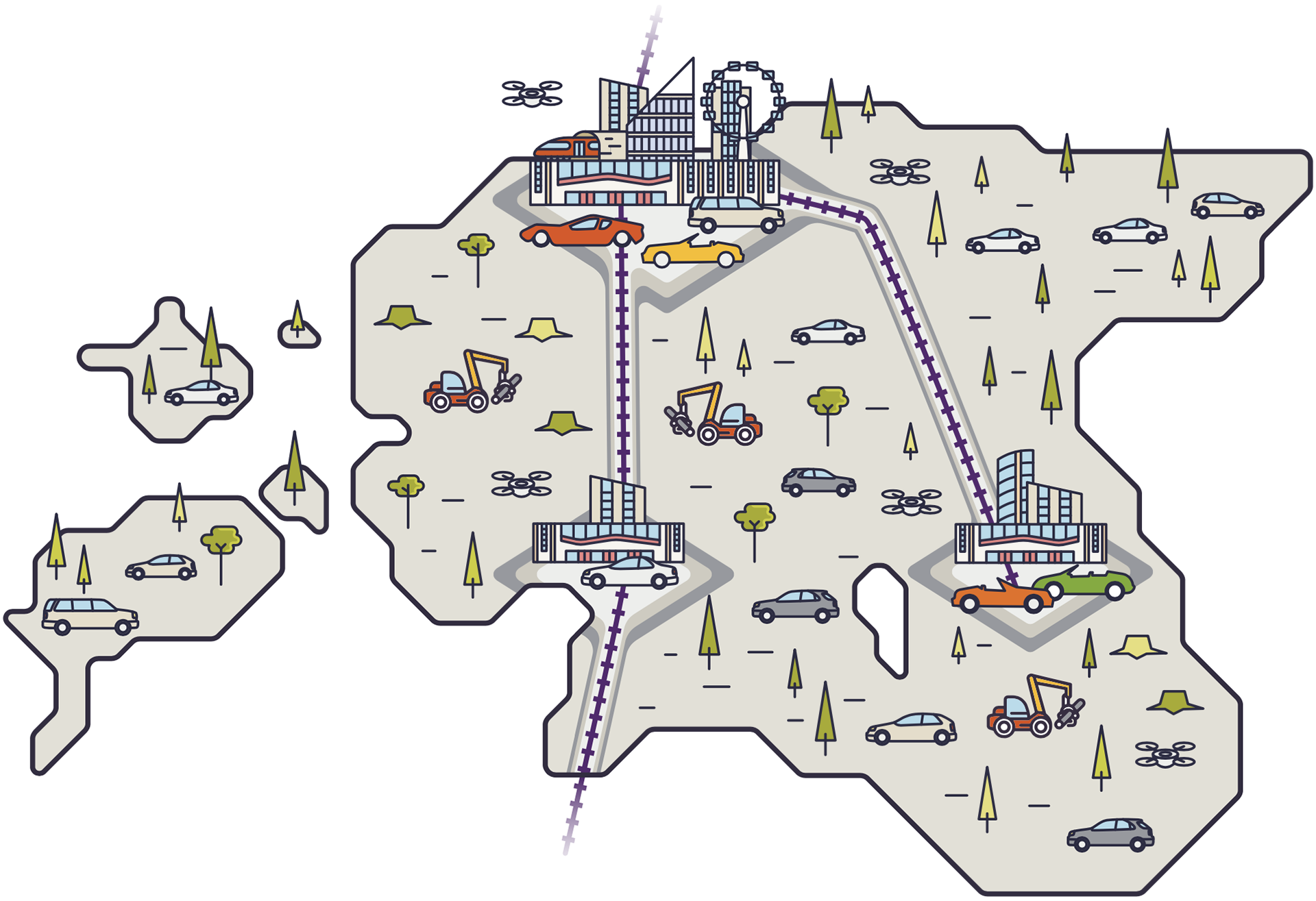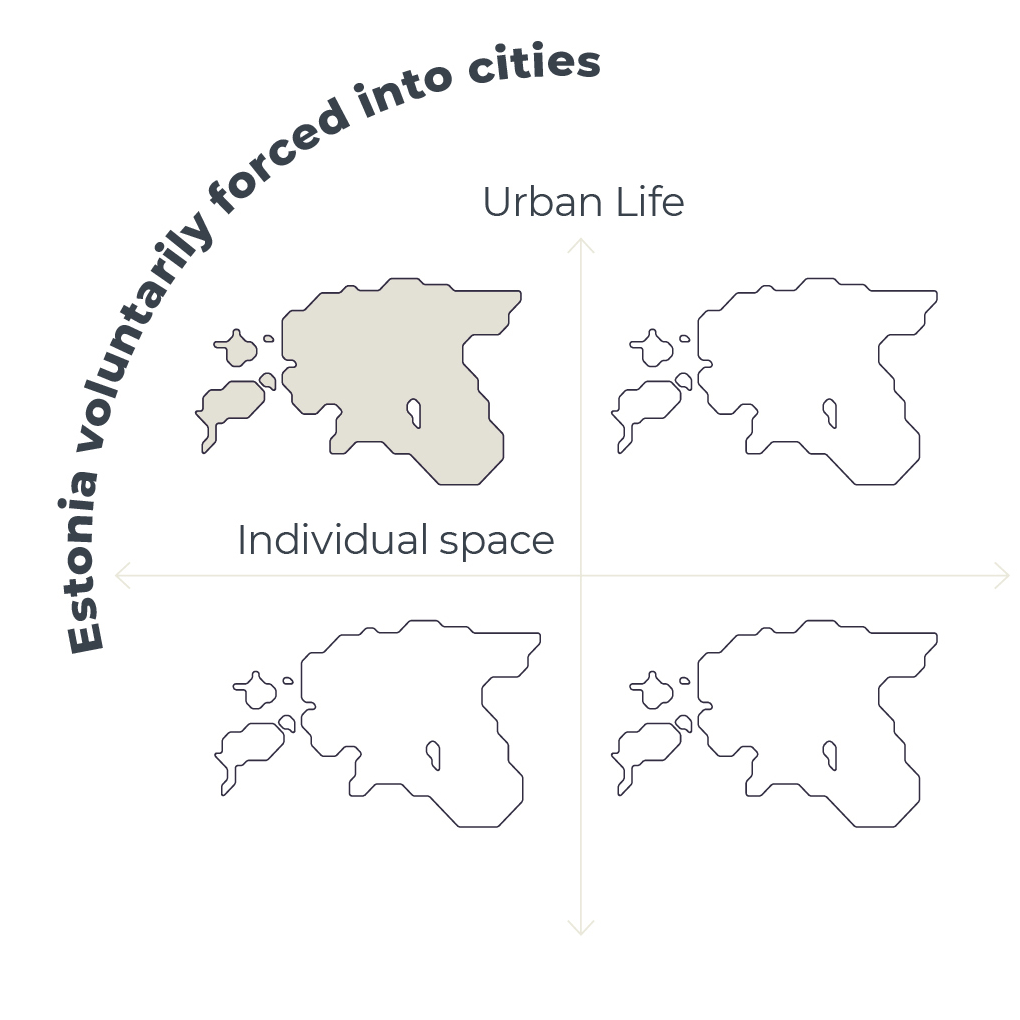Estonia voluntarily forced into cities

| Urban population: | 80% |
| Wealth disparity: | high |
| Spatial inequality: | high |
| Good public space: | for the privileged |
| Data: | the ‘all-seeing eye’ of large corporations, unequal distribution of rights |
| Society’s expenditure on basic infrastructure: | high and growing |
| Socio-economic efficiency: | low |
| Sustainable development goals: | not achieved, although some areas are stronger than others |
Driven by the ‘invisible hand’, Estonians and quite a number of New Estonians have gathered in the urban regions of Tallinn, Tartu and Pärnu – rapid housing development now covers the fields surrounding the city, while the historical cities centres themselves have not grown at the same pace. Instead of absent city centres, people meet in shopping and entertainment centres. Instead of city squares, people need car parks and wide roads, because the average Estonian does not want to see the poor or strangers. Besides, it is dangerous to be on the street. There is great economic inequality between regions: the more affluent people live in areas with good schools, tennis clubs and beautiful greenery surrounded by fences and guards. The cities are overwhelmingly segregated and dominated by the homes of the poor and new immigrants, suburban areas have poor schools and connections, and it is dangerous to go out in the evening. The rich live in separate exclusive areas. Tallinn and Pärnu are well connected to the world – the Helsinki Tunnel and Rail Baltica provide good connections for those who can pay for them. Tartu can also be quickly reached by train or private drone capsule. People have no significant sense of community; they tend to explain wealth in terms of merit and poverty in terms of laziness. The data on the ‘lazy’ is for sale to everyone, while the more affluent pay ransom to big companies for some degree of privacy. Society suffers from lifestyle diseases and as there is no supportive sense of community, most Estonians feel lonely. On the happiness index, which has replaced GDP as the main measure of society’s success, Estonia has been falling for several years in a row, and campaigns seeking greater cohesion are not slowing the decline.

